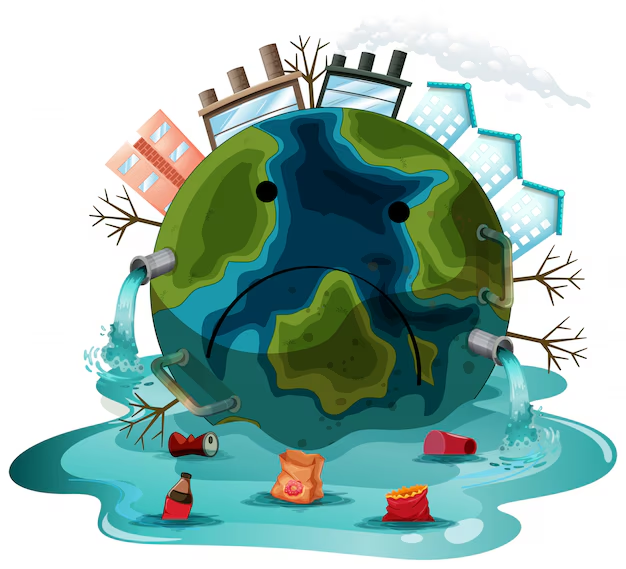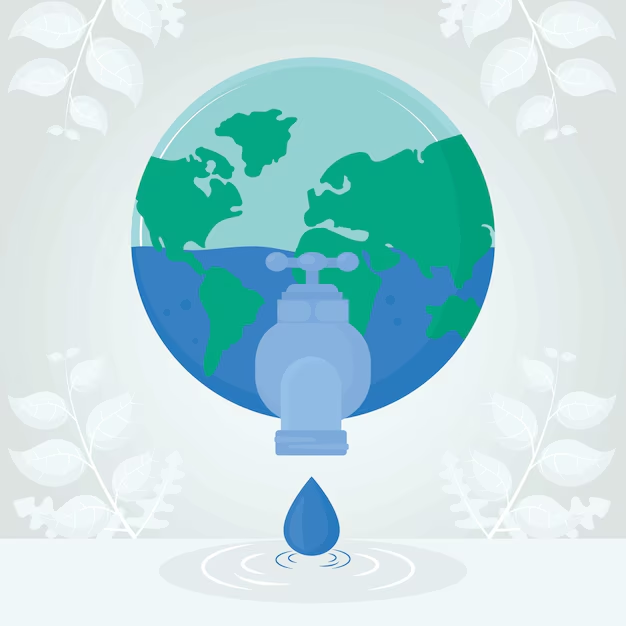Water is essential for life, yet the world faces an increasingly alarming water crisis. As populations grow, climate change accelerates, and pollution worsens, billions of people are impacted by water scarcity and poor water quality. This blog will dive into the causes, effects, and potential solutions to Earth’s water problem.

Causes of the Global Water Crisis
- Overuse of Water Resources: Agriculture consumes about 70% of the world’s freshwater, leaving little for domestic and industrial use. Inefficient water use in irrigation and farming further depletes limited resources.
- Climate Change: Global warming disrupts weather patterns, resulting in prolonged droughts in some regions and excessive rainfall in others. These extremes strain the water supply and reduce the availability of clean drinking water.
- Pollution: Industrial waste, plastic, and untreated sewage pollute rivers, lakes, and oceans, making them unsafe for human consumption. Contaminants like heavy metals and chemicals worsen the water quality crisis.
- Population Growth and Urbanization: The demand for clean water skyrockets as cities expand and populations grow. Poor infrastructure in many urban areas leads to water shortages and contamination, particularly in low-income regions.
- Deforestation and Land Use: Trees and natural vegetation play a crucial role in the water cycle by regulating rainfall and preventing soil erosion. Large-scale deforestation disrupts this balance, contributing to flooding and water scarcity.

Effects of Water Scarcity
- Health Risks: Waterborne diseases such as cholera, dysentery, and diarrhea are rampant in areas with limited access to clean water. These diseases disproportionately affect children in developing countries, leading to high mortality rates.
- Food Insecurity: With less water available for agriculture, food production is at risk, leading to shortages and rising food prices. This exacerbates hunger and malnutrition in already vulnerable communities.
- Economic Impact: Water scarcity hampers industrial activities, particularly in agriculture, manufacturing, and energy production. Countries facing severe water issues experience reduced economic growth, job losses, and increased poverty.
- Environmental Degradation: Aquatic ecosystems suffer when rivers, lakes, and wetlands dry up or become polluted. This loss of biodiversity destabilizes ecosystems, affecting wildlife and plant species worldwide.

Solutions to the Water Crisis
- Sustainable Agriculture: Shifting to more water-efficient farming techniques, such as drip irrigation and crop rotation, can reduce water consumption in agriculture. Introducing drought-resistant crops also helps conserve water.
- Improved Water Management: Governments and organizations must invest in modernizing water infrastructure, including repairing leaks, improving storage systems, and creating efficient water distribution networks. Desalination technologies and wastewater recycling can also help boost freshwater supplies.
- Conservation and Reforestation: Protecting natural forests and replanting trees can restore ecosystems and stabilize water cycles. Additionally, individuals and communities can conserve water by reducing consumption, fixing leaks, and reusing water wherever possible.
- Education and Policy Change: Raising public awareness about water conservation and pushing for stricter policies on industrial pollution can have a significant impact. Governments must enforce environmental regulations and invest in cleaner technologies to reduce water contamination.

The Earth’s water problem is not just an environmental issue; it’s a global crisis affecting health, food security, and economies. By taking action—both on an individual and governmental level—there is hope to mitigate the worst effects of water scarcity and ensure a sustainable future for generations to come.
